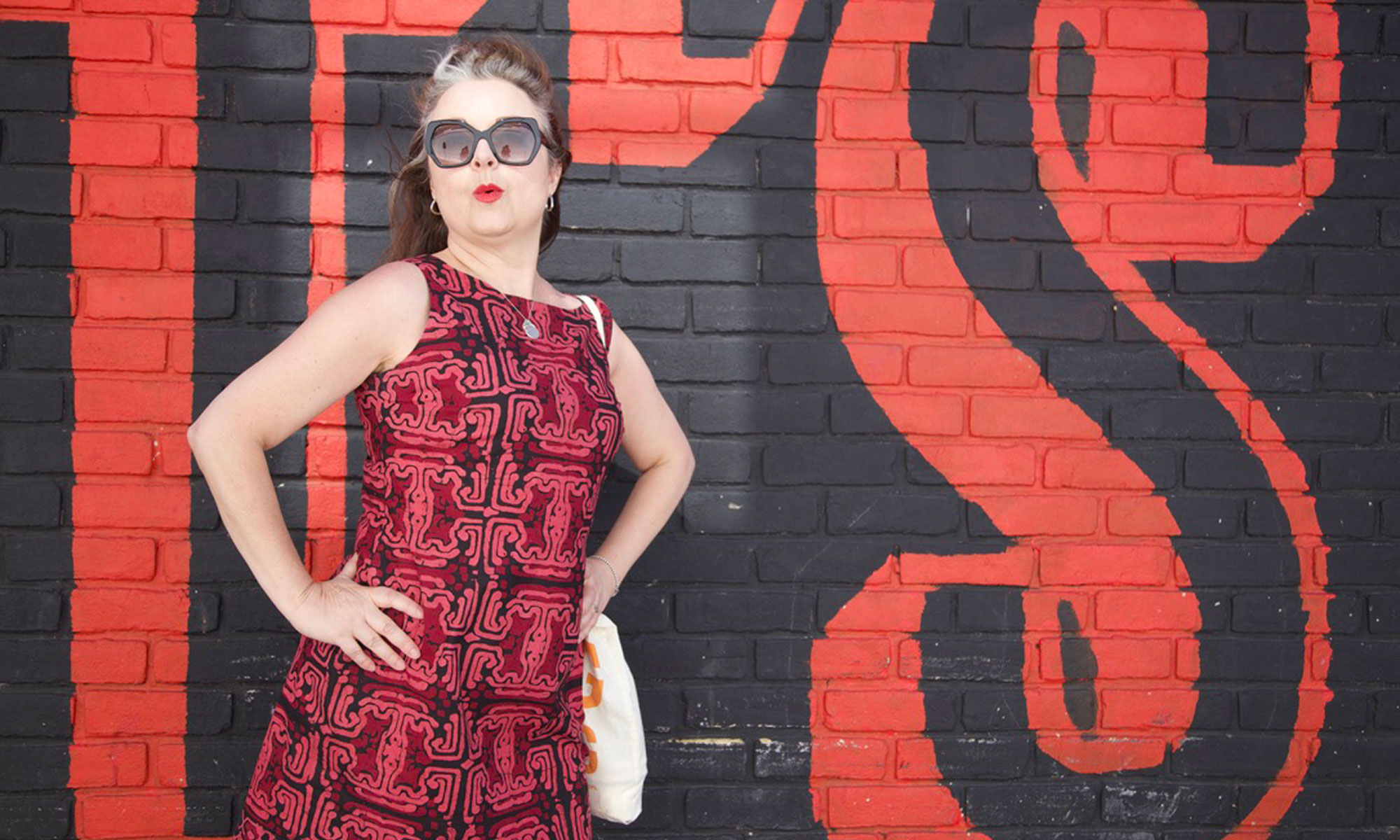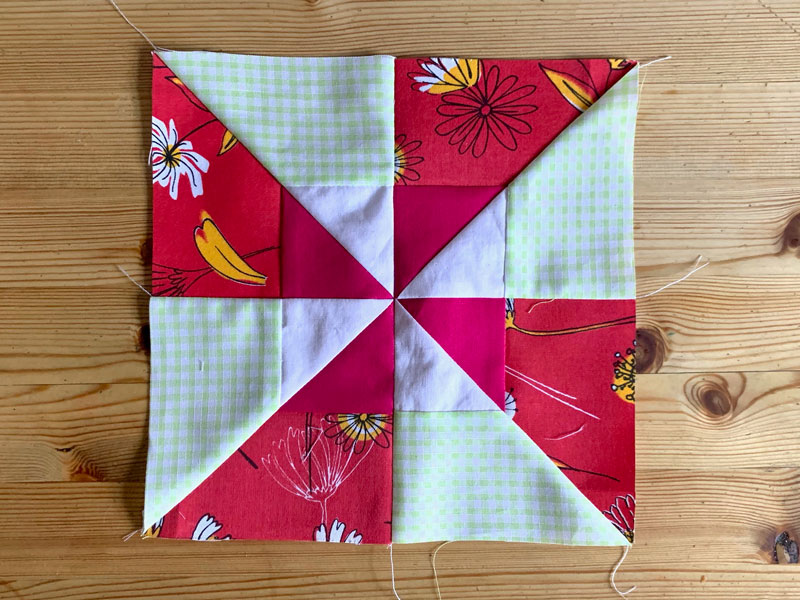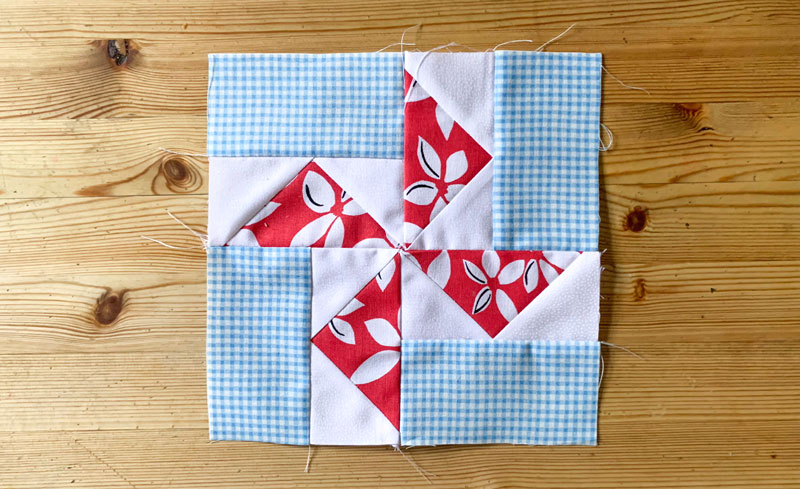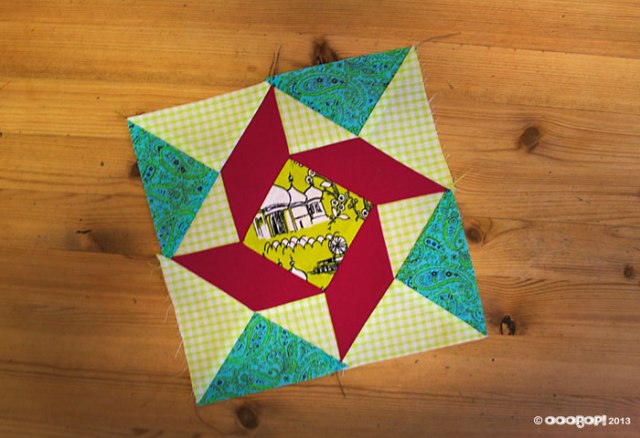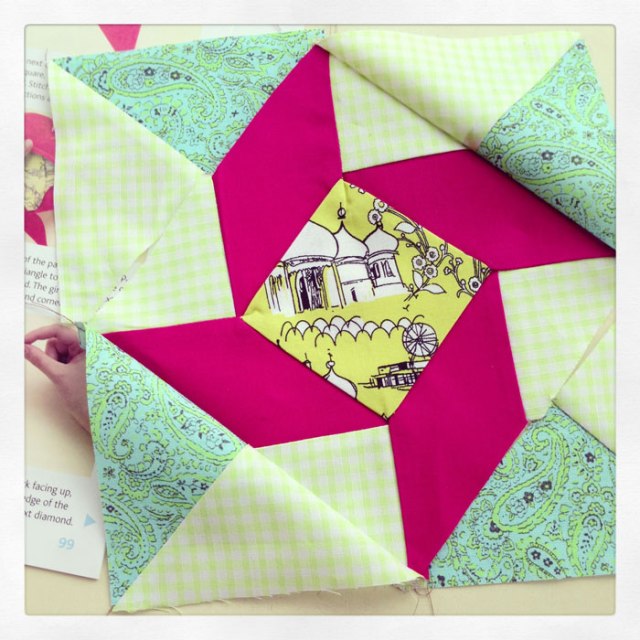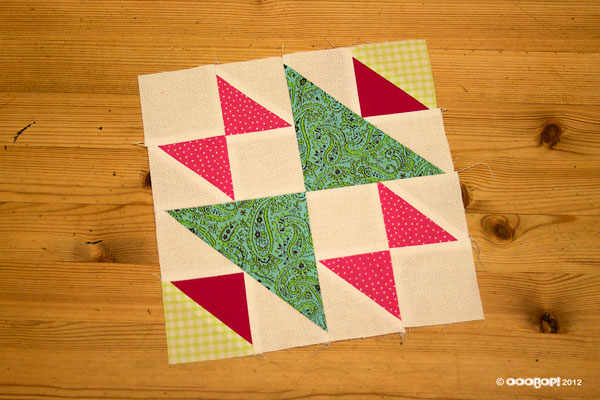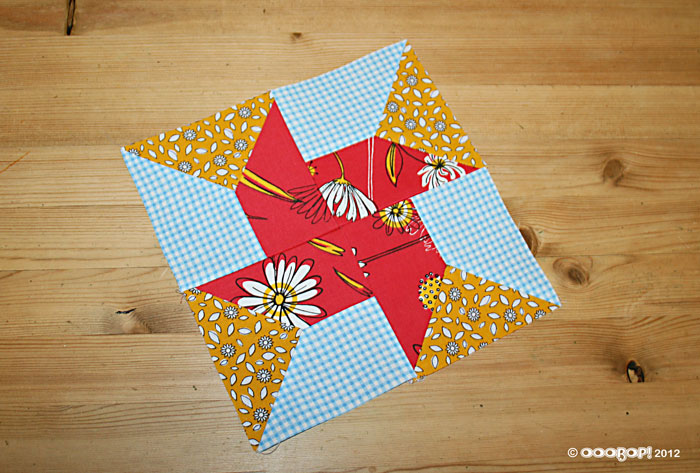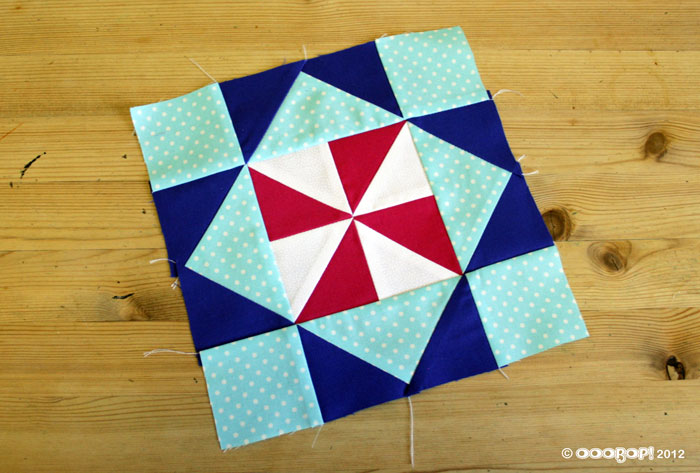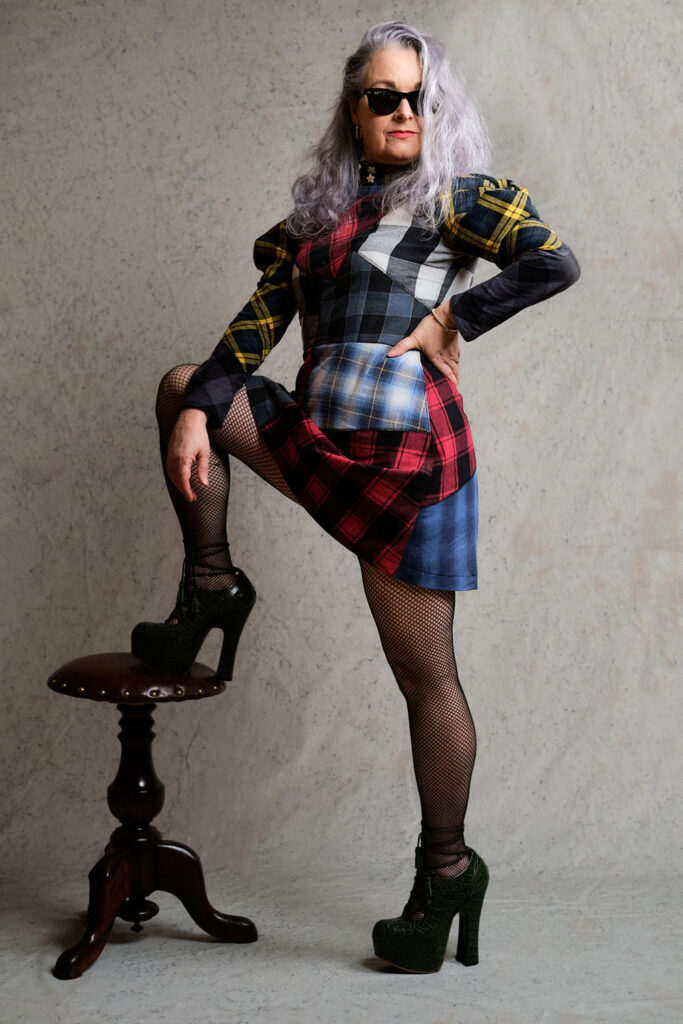
Yes you read that right! This is a dress made entirely of sleeves – those that were cut off of Dan’s RTW shirts after he got fed up with how tight and annoying they were when he was working in them!
I intercepted his route to the bin when I spied a couple of them poking out of the bag. And there then ensued a tussle, with Dan persisting that I had quite enough fabric already. What does that even mean – ‘quite enough fabric’?!
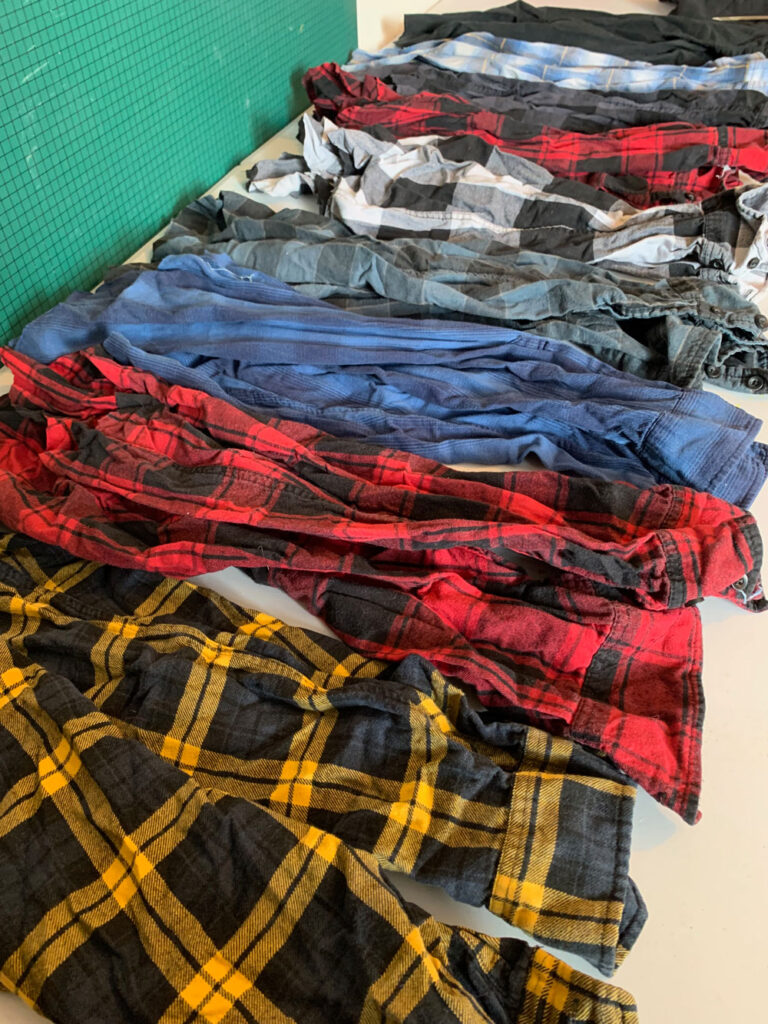
He laid the gauntlet, firmly before me – challenged me that unless I could cite good use, they should not be added to the peak of ‘stash mountain’ !
‘A dress!’ Was my comeback ‘A cool patchwork dress!’ It raised an eyebrow of disbelief but I grabbed that bag and literally ran to the studio with it and hid it under the cutting table.
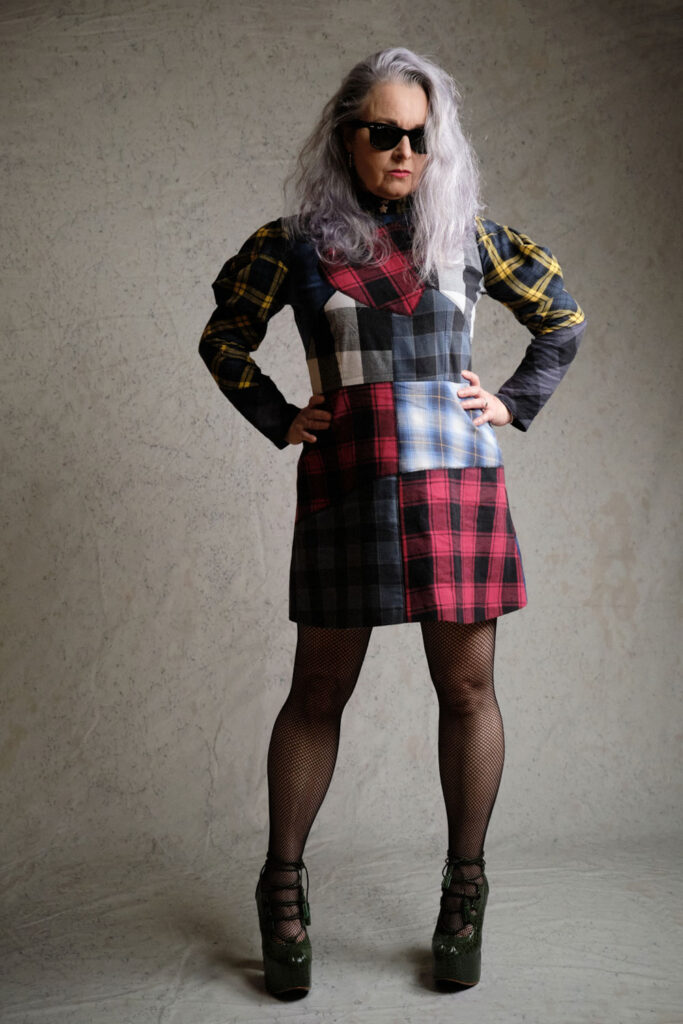
It remained there for quite a while, mostly because I had other projects going on, but in that safe space of time I was able to hatch a plan in my head. I didn’t want a crafty kind of patchwork dress. I mean they can look cool and boho but that isn’t me. And lumberjack plaid certainly doesn’t lend that vibe! I spent hours dividing up sketched outlines of dresses with small squares, big squares and randomly sized squares. None floated my boat.
Then I tried random shapes to really over complicate a simple idea and then I realised it was the persistence of the vertical and the horizontal lines that were irritating me.
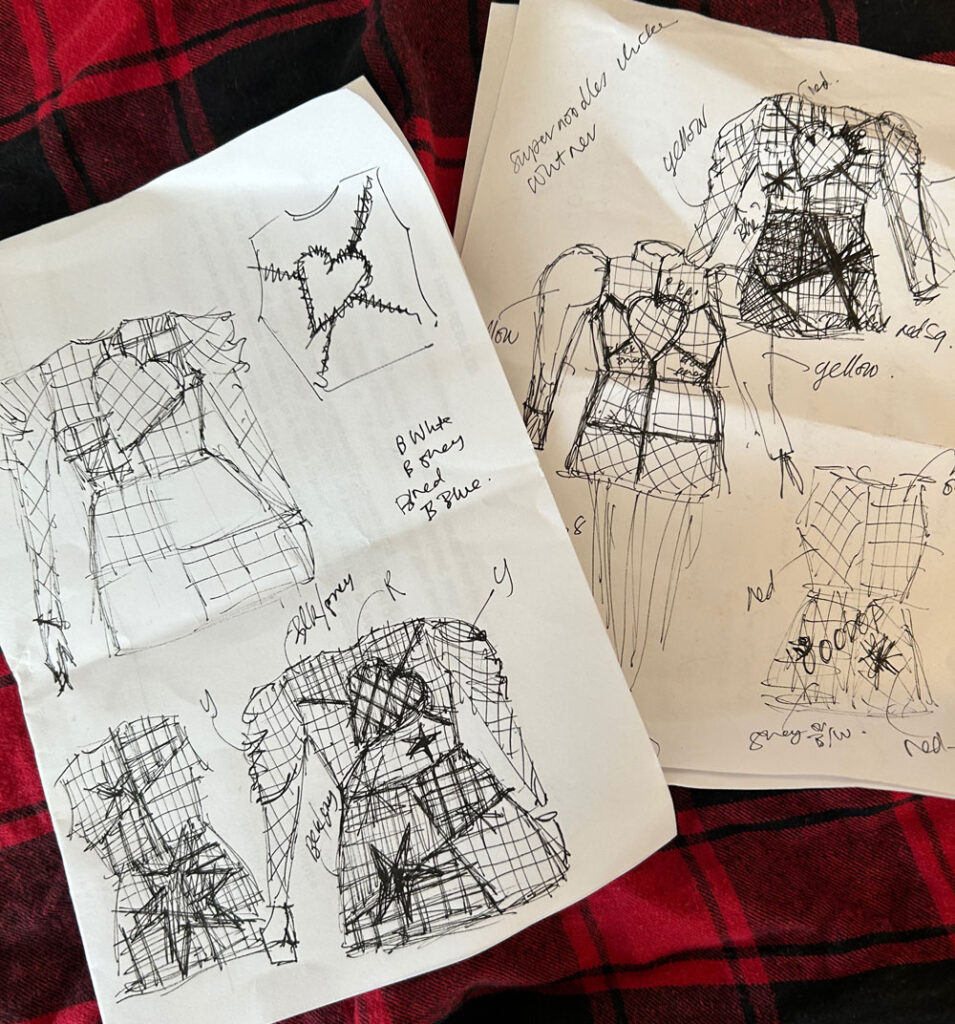
So I tried with some angular shapes and I was beginning to get somewhere. I already knew a heart was going to feature. It is after all a nod to Westwood. Someone who totally wore her heart on sleeve. And I’d be lying if I said I wasn’t inspired by her. She taught me it was ok to dress differently, not to care (so much) about what anyone else thinks and to do it boldly. To buy less and choose well and to take care of our planet.
‘Fashion is very important. It is life-enhancing and, like everything that gives pleasure, it is worth doing well’ – Vivienne Westwood
I don’t always sew as sustainably as I could but I like to reuse and recycle and rewear whenever I can. Read to the end for some more of my sustainable projects.

Once the sketch was finalised, I pondered how I was going to sew them together. These sleeves are made of cotton – a flannel I think – and they are soft and drapey. That was going to work wonderfully for the bias cowl sleeve I had in mind but not so well for the actual body of the dress. So it had to be stabilised somehow. I considered using a double sided fusible interfacing but I really didn’t want the extra weight so I simply sewed the pieces onto some black cotton I had in stash. I used a self-drafted pattern from my baby cord dress and cut the black cotton pieces first, before mounting the cutout shapes. I made sure to overlap them slightly and I zigzagged, first on the absolute edge and then again each side of each piece to make sure it was secured but also to make the black lines of stitching look intentional and a little like stained glass panels.

I managed to glean all the fabric I needed from 9 shirts worth of sleeves. I came a bit unstuck on the actual sleeves because I was so intent on featuring the yellow ones with as much coverage as possible. And that meant including the sleeve plackets! I’ve left the buttons on for context and again to make it intentional.
The collar is made from the cuffs of the yellow sleeves. Two of them, buttoned up, fitted perfectly around the necline. Again I was going to use the original buttons, but the Pigeon Wishes star buttons were cooing me. Loudly!

I considered making this dress sleeveless in the beginning. Oh the irony! But reconsidered at the prospect of not wasting any of those sleeves, to create one with statement sleeves instead. I took a draping class a while back with Mr O and he taught us how to draft a cowl sleeve, I’ve tried a few sleeve-drafting tutorials in the past but his was so much simpler and I’m slowly learning that long-winded old school methods aren’t always the best – controversial, I know!
I winced at the prospect of having to patch in some small pieces at the top of the sleeve but actually it adds to the punky charm and I love it. It feels like I’ve broken a whole heap of rules in the making of this dress, yet at the same time, none!
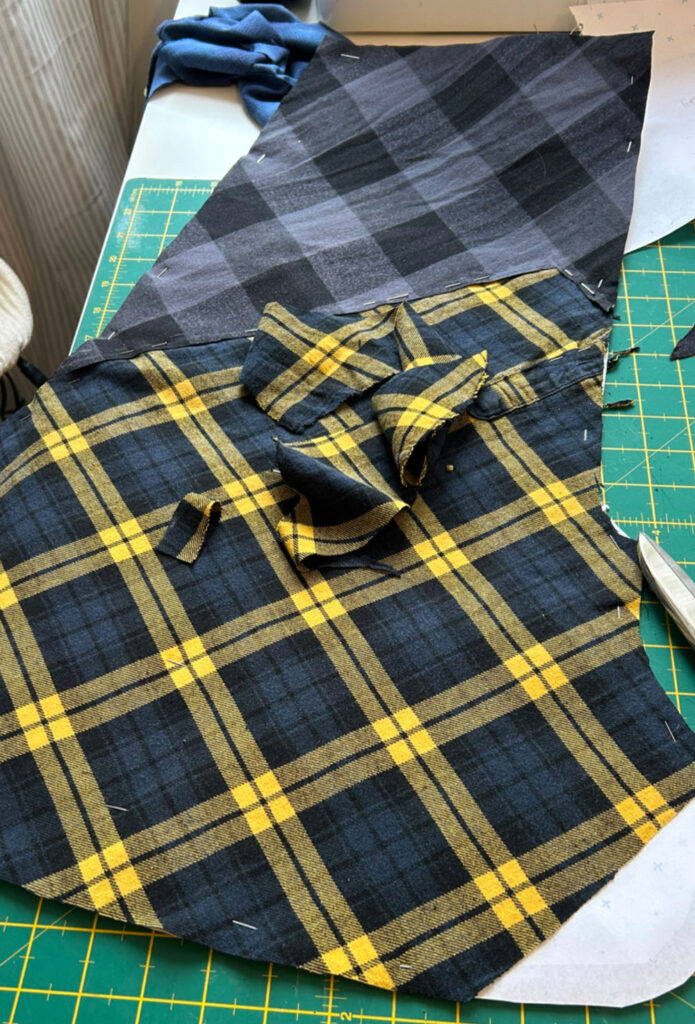
The good thing about having mounted all those pieces on black fabric is that the insides are clean (ish) and everything hangs as it should. Once I sewed up the side-seams, the shoulders, the skirt to the waist-seam and inserted the sleeves, I pressed open the overlocked seams on the inside so everything laid perfectly flat. (Couldn’t be arsed to change the thread from white to black but hey, who is going to see?!) I really must invest in some rainbow overlock thread. I think that would have looked even better to be fair.
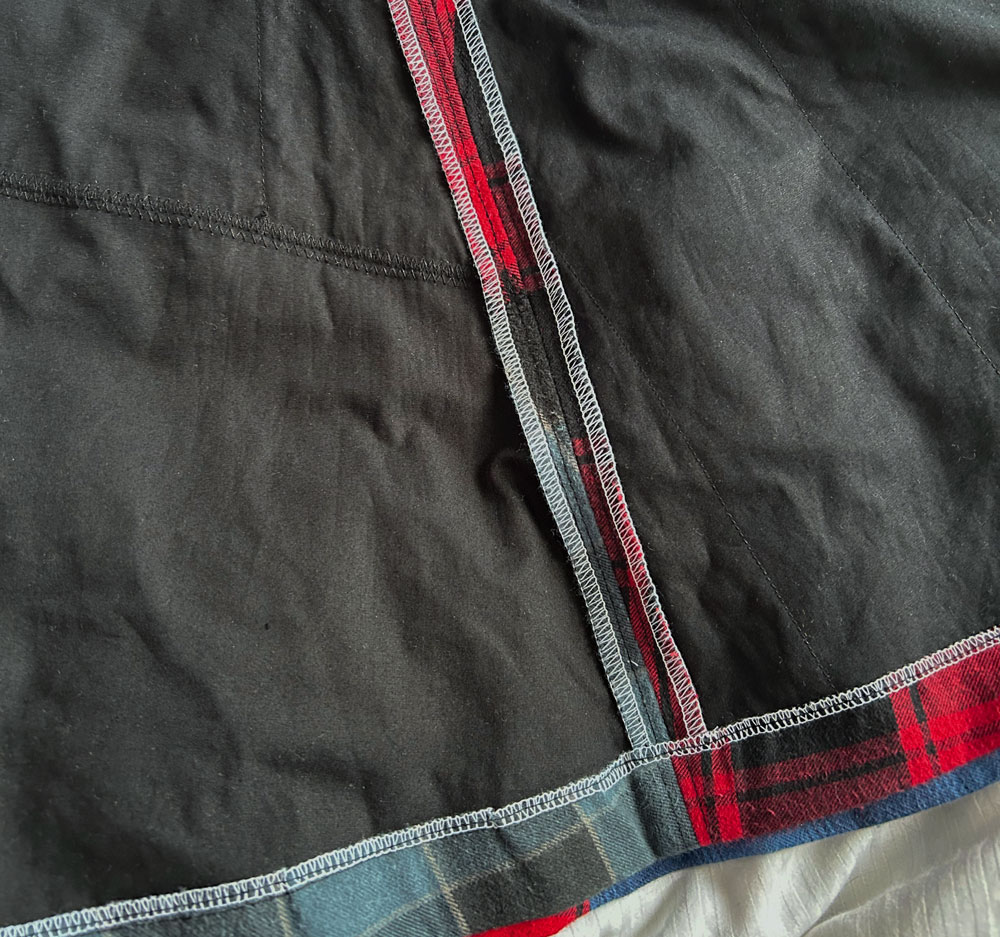
The collar went on next. I just had to cut off the seam bulk but of course the interfacing and the topstitching along the top and front edges was already in place – bonus!
And then I sewed in an invisible zipper. Also from stash. I made sure to align the waist seam before sewing up the second side of the zip because as punk as this is, I have standards you know, haha!
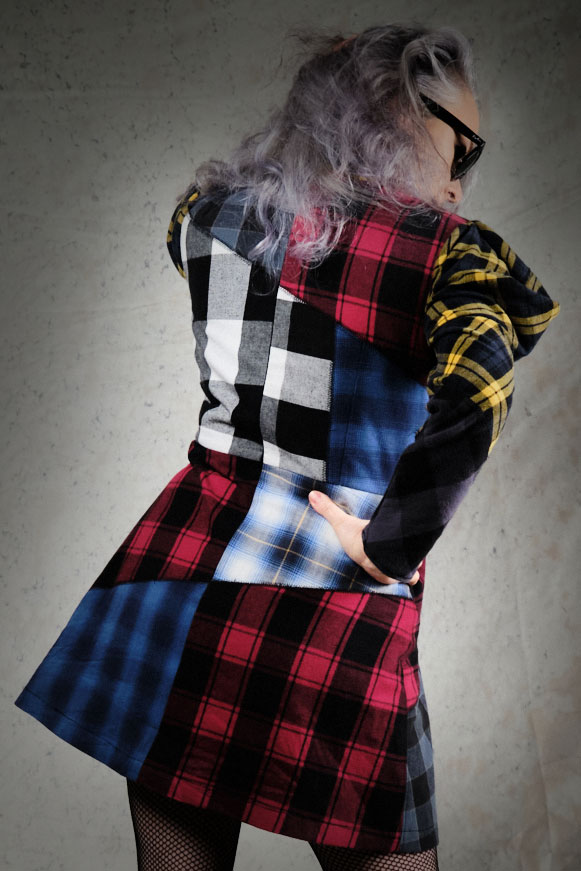
Having said that, standards went a bit out of the window with machined hemming. I toyed with hand-sewed ones, but… well… hours in the day and all that!
Dan was in the studio with me when it was all sewed up and finished. And suggested we shoot it that same night. So we went back home for tea grabbed some tights, shoes, shades and a skateboard (of course!) and just went for it. No time for a hair wash – just scruffed it up, just as I did in the 80s. And it couldn’t have gone better.
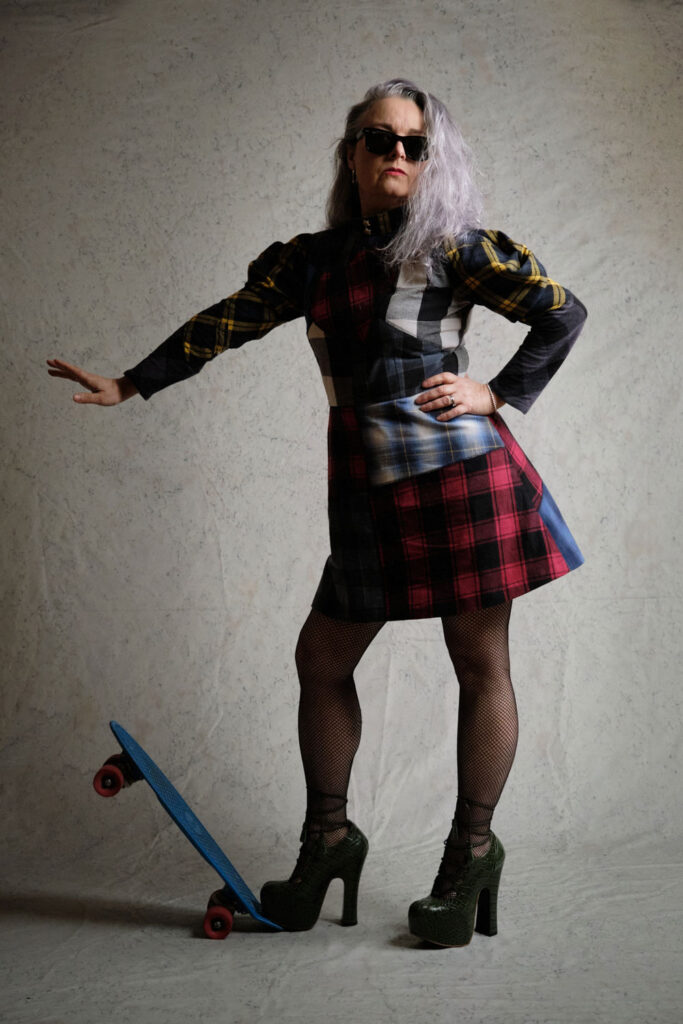
I am so over the moon with the shots that he took. He has forever championed my creations and has been so obliging with photographing them over the years – often more eagerly than me! But he totally knocked it out of the park this time. Do look him up if you are ever thinking of getting some professional shots done at danieljamesphotographic. I know I’m biased and all but he is bloody good!
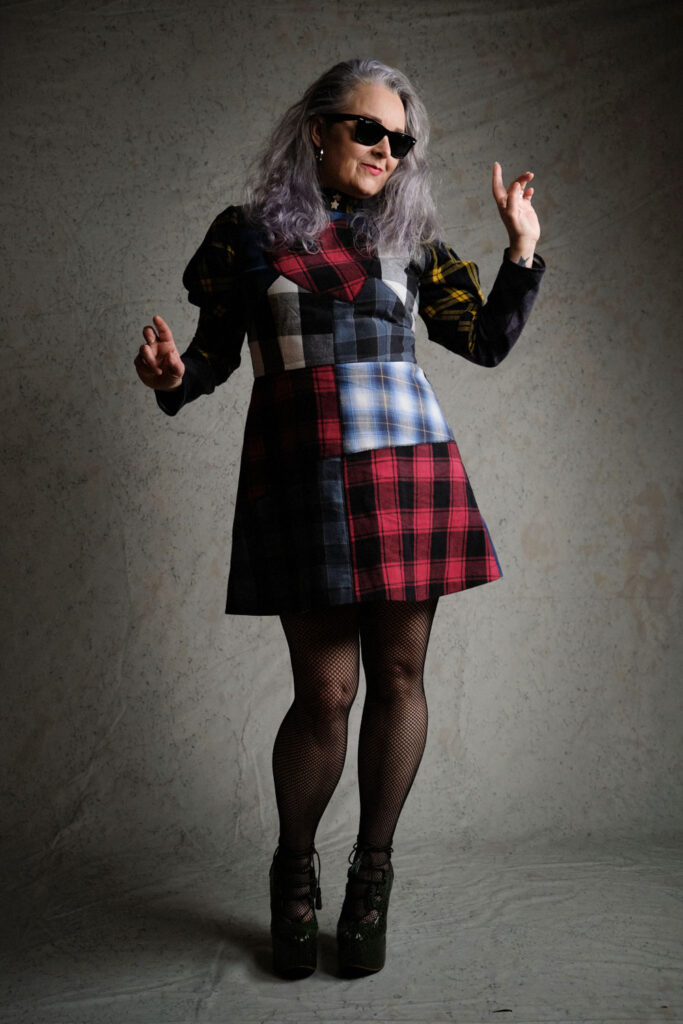
I posted some of them on Instagram a few days ago and the comments have been both humbling and mindblowing. It feels so good to have created something that is all me. Well, a bit of Dan and a bit of Viv too! And to have it appreciated by so many. I am so very very grateful and the whole process from bin-interception to reception of the photos has been incredible. And It’s just made me want to do more of the same.
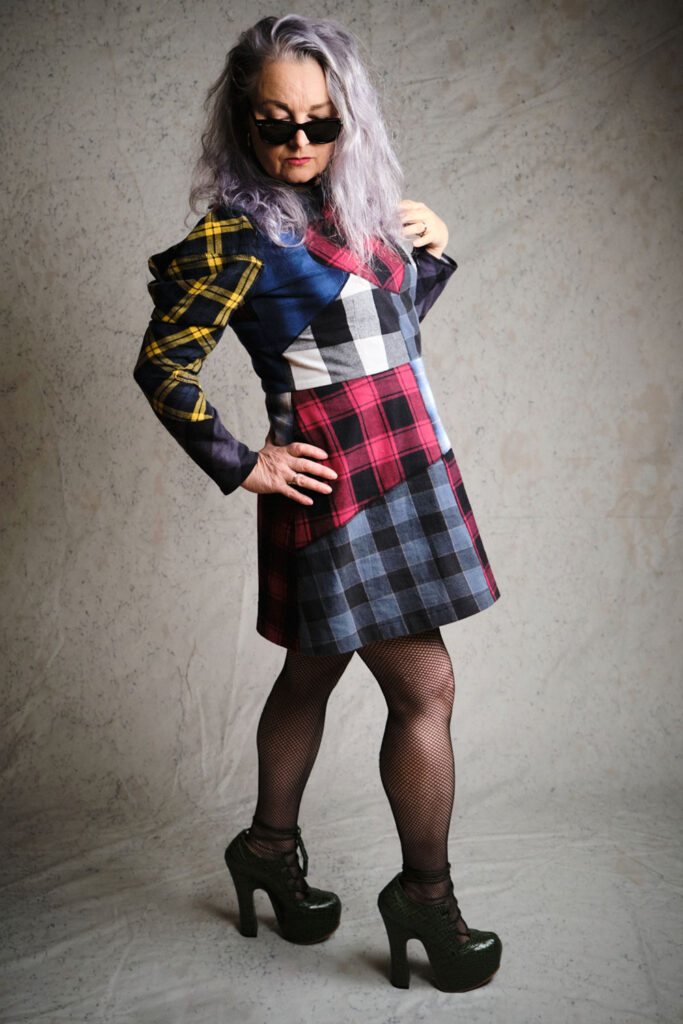
I have some really small scraps left over. I didn’t throw any cut-offs away. (Don’t tell Dan!) And I have another cool little project in mind so watch this space or follow along on Insta to find out more, soon.
Other favourite upcycled makes:
Dressmakers ball gown
Martini dress
Romper suit
Portrait tote bag
Lacroix Roman blinds
Ooobop Original jumper
